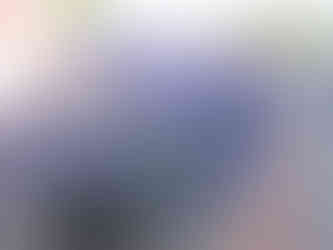Perovskia atriplicifolia
- Admin

- Jul 11, 2021
- 2 min read
Updated: Aug 21, 2021

Say that name ten times fast! Or skip the tongue twister knowing that its common name, Russian sage, is even funnier when learning it is not a sage or from Russia. Regardless of all this wackiness, P. atriplicifolia is a dynamic addition to the garden where its texture and coloring will contrast with more traditional plants. Giving off an ethereal effect in masses, its distinctly blue flowers emerge from lavender bracts that feel like velvet. The challenge is to find a location where the colors do not reseed, such as in large masses or with a simple background.
Russian sage lends itself to cottage gardens, particularly if combined with lavender. When both are in bloom, combined with other complimentary plants like ornamental grasses, the image is striking yet calming with their subdued colors. Lavender and sage are classic combinations for Mediterranean gardens, and I often found this combination when I lived/worked in Sonoma County. Just remember that P. atriplicifolia needs more room than expected to really take advantage of their airy form and expansion (they can spread).
facts
Botanical Name: Perovskia atriplicifolia
Perovskia: Honoree, soldier Vasily Alekseevich Perovsky
Atriplicifolia: Having leaves like orache or salt-bush
Common Name: Russian sage
Family Name: Lamiaceae
Origin: Afghanistan, Pakistan, Iran, Tibet
design considerations
Positioning: Middle ground of perennial border, texture contrast
Garden Themes: Cottage/Informal, Mediterranean/drought, perennial, pollinator
Uses: Border, mass, specimen, bees
identifying characteristics
Type: Perennial
Form: Upright
Texture: Fine
Size: 4' and spreading (in favorable conditions)
Outstanding Feature(s): Flower
Bark: Light gray green to silver
Leaf: Fragrant when crushed
Type: Simple
Arrangement: Opposite
Shape: Quadrate
Margin: Serrate
Color: Gray green above, lighter underneath
Surface: Lightly hairy
Flower: Summer into autumn. Terminal panicle of small, light lavender blue, and tubular
cultural requirements, tolerances & problems
Sunset Zones: 2-24
USDA Zones: 5-9
Light: Full sun
WUCOLS SF Bay Area Hydro Zone: Low
Soil:
Texture: Sand, loam (well-drained)
Moisture Retention: May dry between watering (avoid persistent moisture)
pH: Neutral to lightly alkaline
Tolerances: Drought, deer
Problems: May become floppy with too much water and/or too little sun
Insects: Not observed
Disease: Rot
citations & attributions
Bayton, R. (2019). The Royal Horticultural Society's the Gardener's Botanical: An Encyclopedia of Latin Plant Names. London: Mitchell Beazley.
Missouri Botanical Garden. "Perovskia atriplicifolia." Accessed on July 10, 2021 from https://www.missouribotanicalgarden.org/PlantFinder/PlantFinderDetails.aspx?kempercode=e540.
Norris Brenzel, K. (Ed.). (2012). The New Sunset Western Garden Book. New York: Time Home Entertainment, Inc.
UC Master Gardener Program of Sonoma County. "Perovskia atriplicifolia." University of California, Division of Agriculture and Natural Resources. Accessed on July 10, 2021 from http://sonomamg.ucanr.edu/Plant_of_the_Month/Perovskia/.
Water Use Classification of Landscape Species. "WUCOLS IV Plant List." University of California, Division of Agriculture and Natural Resources, Davis. Accessed on June 28, 2021 from https://ucanr.edu/sites/WUCOLS/Download_WUCOLS_IV_List/.
Photos:
Plant Mass: "Perovskia atriplicifolia 'Rocket Man'." by cultivar413 is licensed under flickr.
Flower Detail: "Perovskia atriplicifolia 'Blue Spire." by enbodenumer is license by flickr.
Plant in Median: "Purple Sagebrush" by Billy Hathorn is licensed by Wikimedia Commons.
All other photos by TELCS.














Comments